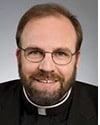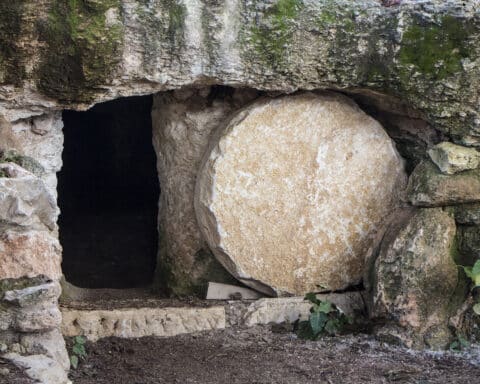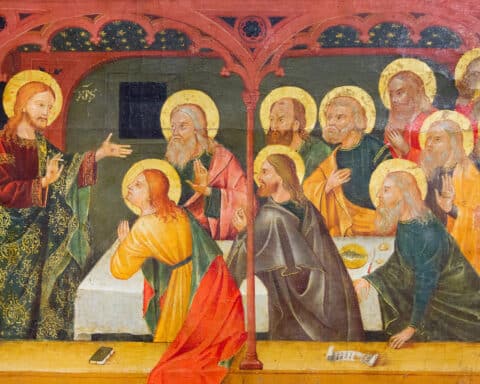
— Name withheld, via email
Answer: No. As a general rule the priest should be seated in the sanctuary in the chair designated for him. The General Instruction of the Roman Missal says: “The chair of the priest celebrant must signify his office of presiding over the gathering and of directing the prayer. Thus, the best place for the chair is in a position facing the people at the head of the sanctuary, unless … the tabernacle is in the center behind the altar. Any appearance of a throne, however, is to be avoided” (No. 310).
Since the priest has a designated chair, it is expected that he sits there. While the prominent chair for him is not a personal honor, it is to be recalled that, within the liturgy the priest-celebrant is a sign of the presence of Christ, to whom the priest is configured by holy orders.
All this said, it sounds as if your priest, while having a chair in the sanctuary, moved to the congregation, but only for the homily while the deacon was preaching.
While still not technically proper, there may be here the simple problem of the priest being able to hear. In many sanctuaries it is hard to hear what is said at the ambo since the speakers are often outside or forward from the sanctuary. This makes it difficult to hear and understand what is being said, particularly the unfamiliar text of a homily.
In a case like this, it is hard to demand that he stay there to observe a norm that, while important and otherwise to be observed, is a general norm that may admit exceptions.
Struggling to believe
Question: Matthew 28:17 states that even after the Lord’s resurrection, some of his disciples, named as the Eleven, still doubted him just before he ascended. Why?
— Pater Tate, Long Beach, California
Answer: The Greek text is a little more forgiving than the word “doubted,” used in most modern translations, suggests. It is distázō, which more richly means to “waiver.” So the word describes going two ways or vacillating between positions. Thus the ones described here are not stubbornly doubting or refusing to believe. They are struggling to believe or understand. That said, your question remains: Why?
It seems hard at first to conceive how those who had seen Jesus alive could still feel doubt. But the Resurrection narratives indicate that there was something mysterious and supernatural in the manifestation of Jesus’ glorified body. Some don’t recognize him at first, he appears and then disappears, etc. Thus, there is something very human in their responses here. How do you get your mind and heart around so startling a mystery?
We read these texts from a vantage point of over 2,000 years. But they experienced the whole thing live. Consider what questions must have been in their minds. Who is this? Is Jesus a ghost? No, we can touch him. It is clearly him, but something seems different. Am I really sure? Am I dreaming? I can’t just go and see him now, like before, for he appears and disappears at will. What does all this mean for me? He keeps saying he will send the Spirit who will explain everything. When? How? We see, therefore, a human portrait of trying to process an event that is astonishing and previously unimaginable to them.
Msgr. Charles Pope is the pastor of Holy Comforter-St. Cyprian in Washington, D.C., and writes for the Archdiocese of Washington, D.C., blog at blog.adw.org. Send questions to msgrpope@osv.com.





